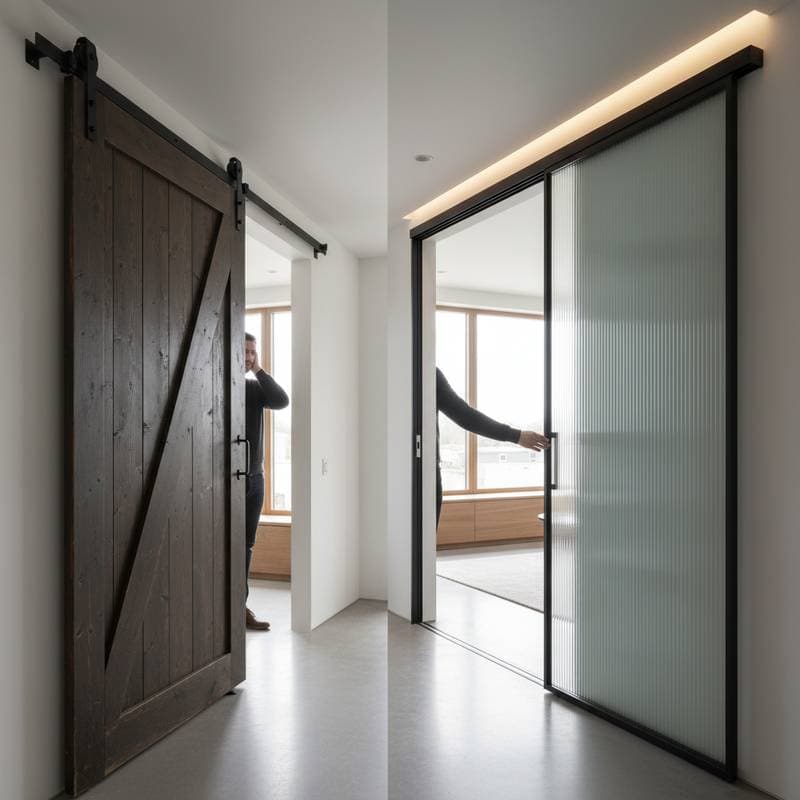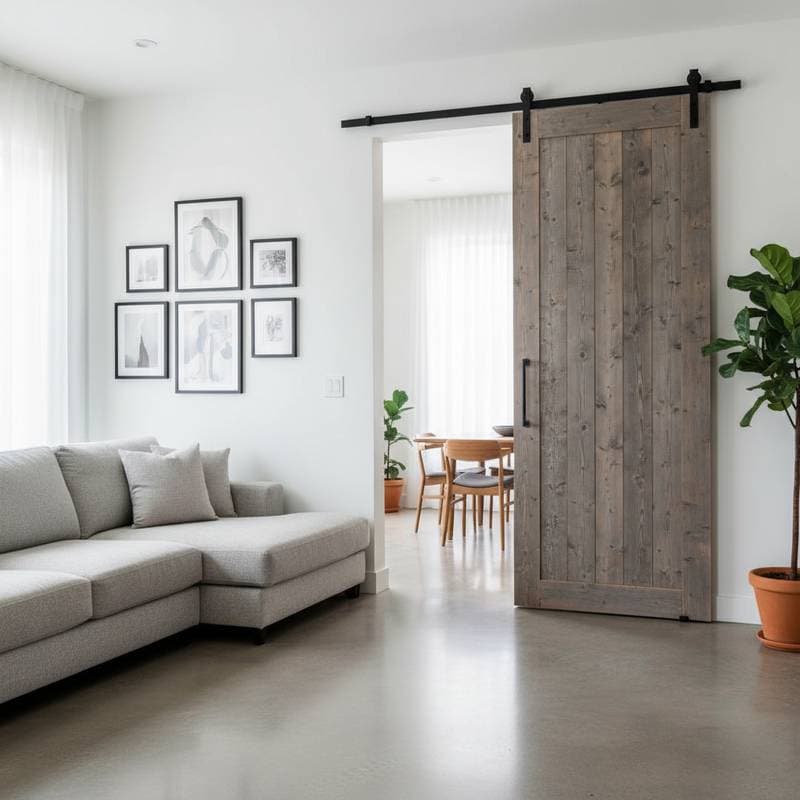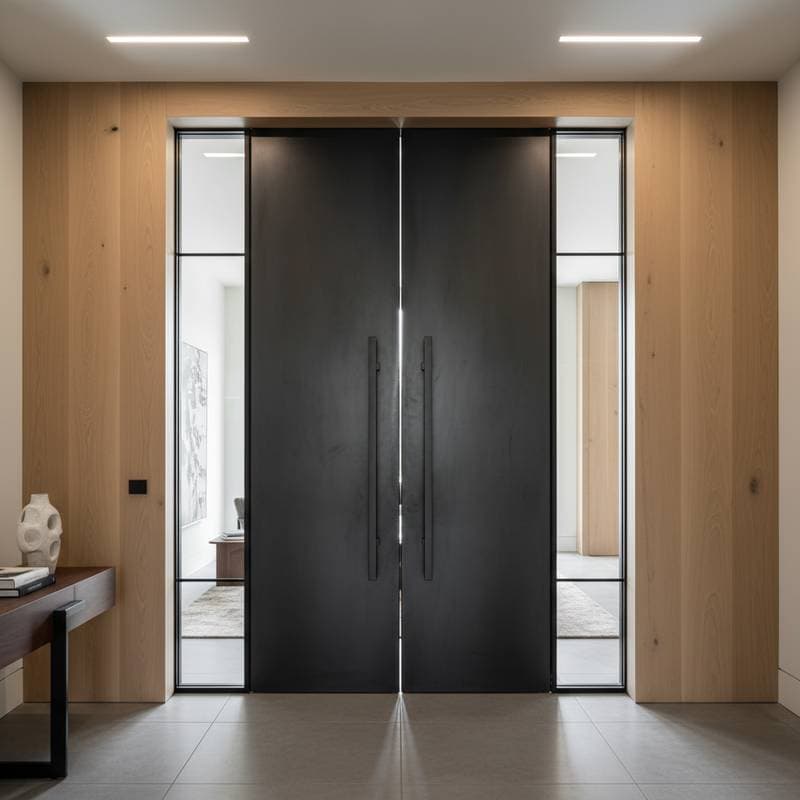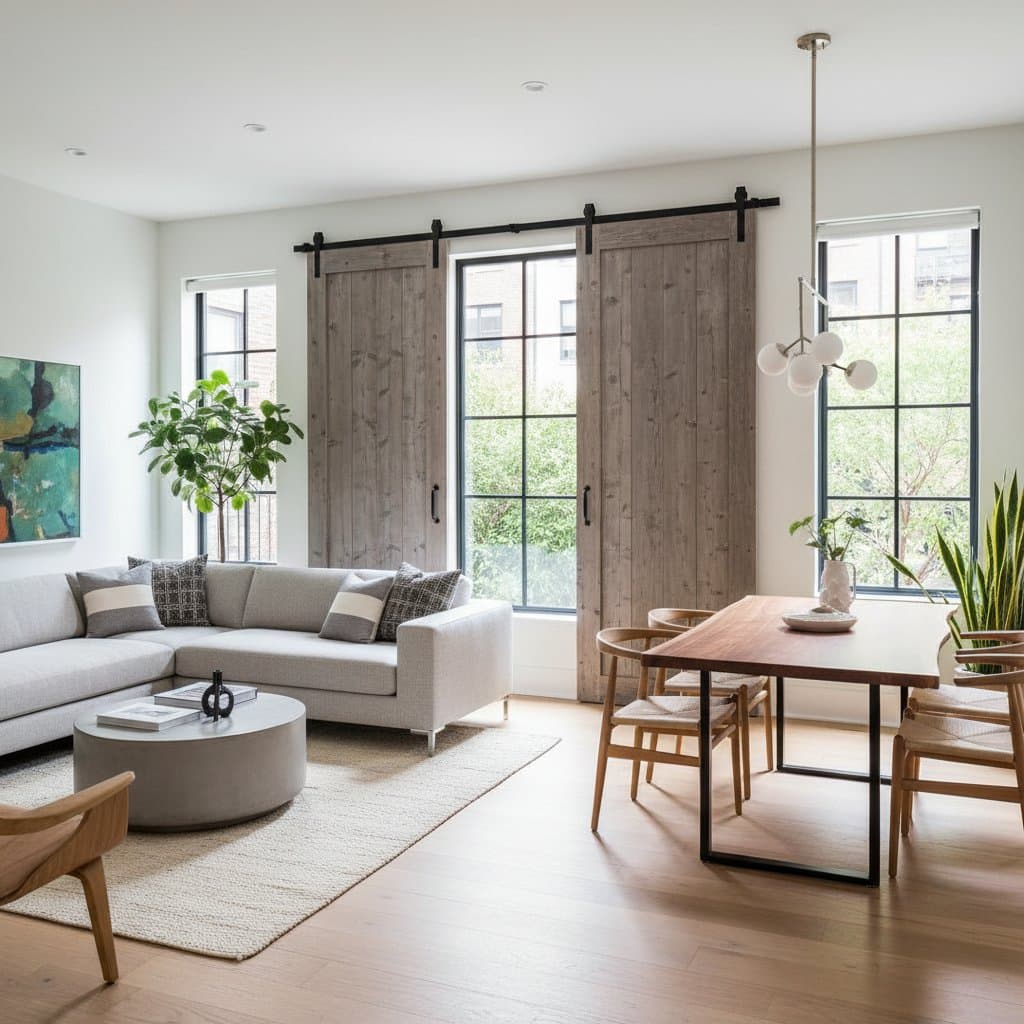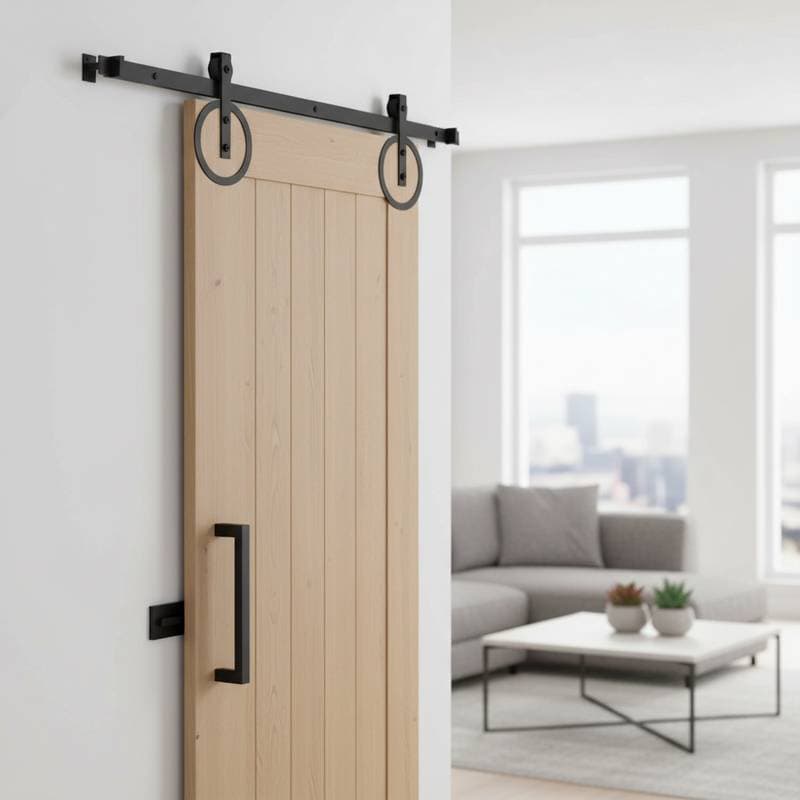Navigating the 85% Surge in Barn Door Hardware Costs: Design Trends and Strategies for Homeowners
Material costs have risen, and interest in rustic-modern designs has grown, leading to an 85% increase in barn door hardware prices. Homeowners continue to value sliding doors for their space-saving benefits, smooth operation, and capacity to combine traditional elements with contemporary simplicity. The primary task involves aligning design preferences with updated budgets for elements such as tracks, rollers, and handles.
This price increase encourages innovative approaches to planning. Homeowners achieve striking barn door installations through thoughtful choices in styles, materials, and upkeep. Understanding connections between hardware options, design aesthetics, and maintenance needs proves essential for long-term satisfaction.
Budget Strategies for Barn Door Installations
Homeowners select from tiered approaches to match financial constraints while preserving quality and style. Each level focuses on key components to optimize value and visual appeal.
Basic Level ($300 to $800)
- Select prefinished hollow-core or lightweight pine doors for affordability and ease of installation.
- Choose powder-coated steel hardware kits in matte black to provide durability without high cost.
- Allocate resources to prominent features, such as custom handles or pulls, to elevate the overall appearance.
Intermediate Level ($800 to $1,800)
- Opt for solid wood or composite doors finished with stains for enhanced warmth and texture.
- Incorporate nylon rollers and low-noise track systems to ensure reliable, quiet performance.
- Include decorative straps or visible bolts to add authentic character without excessive expense.
Premium Level ($1,800 to $4,000)
- Commission doors from solid oak or reclaimed barn wood for unique, high-end craftsmanship.
- Select stainless steel hardware with hand-forged details and hidden fasteners for refined elegance.
- Add soft-close features and polished track finishes to deliver superior functionality and luxury.
Essential Maintenance for Longevity
Modern hardware finishes withstand regular use, but proactive care extends their lifespan. Powder-coated options resist rust in most settings, though exposure to humidity or salt air accelerates fading. Stainless steel endures outdoor conditions effectively, yet indoor use highlights fingerprints that require wiping.
Dust tracks regularly and apply lubricant sparingly to prevent squeaks and binding. Wood doors demand attention based on their finish: seal natural or reclaimed surfaces annually to avoid moisture damage. Painted varieties conceal imperfections longer but necessitate repainting in high-touch zones to maintain appearance.
The optimal setup combines sealed hardwood with robust metal hardware, supporting frequent operation without hardware loosening over time.
Rustic-Modern Barn Doors: Blending Tradition and Simplicity
Rustic-modern designs emphasize natural textures alongside streamlined forms, transforming barn doors into focal points that evoke warmth and functionality. Hardware features exposed tracks and sturdy rollers, highlighting the door's movement as part of the aesthetic. This style fits kitchens, living areas, and entryways where character enhances daily living.
Pair rough-hewn wood with matte black hardware for grounded appeal. Integrate elements like leather pulls or wooden handles to reinforce the organic feel while ensuring smooth gliding.
Materials and Finishes for Rustic-Modern
- Doors: Use distressed pine or cedar with clear coats to showcase grain patterns. Add metal accents for subtle industrial touches.
- Hardware: Matte black steel tracks pair with oil-rubbed bronze rollers to balance rusticity and modernity.
- Surrounding Elements: Coordinate with shiplap walls in neutral tones or exposed beam ceilings for cohesive flow.
- Accents: Simple strap hinges in galvanized finish add authenticity without overwhelming the space.
Common Pitfalls to Avoid in Rustic-Modern
- Overloading with accessories: Limit added brackets to prevent a cluttered look; focus on essential hardware.
- Neglecting alignment: Ensure tracks level perfectly to avoid uneven sliding and premature wear.
- Underestimating door weight: Match roller capacity to solid wood panels to prevent sagging or derailment.
Rustic-Modern Implementation Options
Basic Level ($500 to $1,000)
- Employ engineered wood doors with simulated distressing for cost-effective texture.
- Install black or bronze hardware featuring basic strap designs.
- Incorporate a single decorative pull to introduce vintage elements.
Intermediate Level ($1,000 to $2,500)
- Choose solid hardwood doors with paneled details for depth.
- Upgrade to textured iron or brass hardware for tactile interest.
- Add coordinated hinges, handles, and bolts to unify the design.
Premium Level ($2,500 to $5,500)
- Create custom doors with glass insets or hand-carved motifs.
- Source solid brass or wrought iron hardware reproductions for historical accuracy.
- Frame the track with integrated molding to elevate architectural presence.
Maintenance for Rustic-Modern
Iron and brass develop patinas that enhance rustic charm, though polishing restores shine if desired. Wood surfaces expand with humidity changes; maintain stable indoor conditions and reseal as needed. Frequent handling near pulls may dull finishes, requiring spot treatments to preserve vibrancy.
Contemporary Minimalist Barn Doors: Precision in Modern Interiors
Minimalist aesthetics prioritize sleek profiles and unobtrusive functionality, positioning barn doors as elegant dividers rather than bold statements. Slim hardware and concealed mechanisms support this ethos, allowing doors to integrate seamlessly into open layouts. Ideal for urban lofts, bathrooms, or home offices, this style promotes serenity through subtlety.
Flush-mounted tracks and frosted glass options provide privacy without visual disruption. Select hardware in neutral metals to complement clean lines and neutral palettes.
Materials and Finishes for Minimalist
- Windows: Match slim frames in aluminum to door edges for uninterrupted sightlines. Tinted glass adds privacy while preserving light.
- Doors: Apply high-gloss lacquer or veneer to flat panels. Frosted inserts suit private spaces like powder rooms.
- Siding: Use smooth composite in grays or whites for exterior applications, aligning with cool, understated tones.
- Trim and Accents: Employ narrow, square-edged profiles. Brushed nickel or stainless finishes deliver modern restraint.
Common Pitfalls to Avoid in Minimalist
- Adding excess ornamentation: Subtle hardware prevents dilution of clean aesthetics; avoid ornate pulls.
- Overlooking load limits: Heavy glass demands robust ratings to ensure safe, silent operation.
- Failing structural support: Secure tracks to wall studs for stability; drywall anchors lead to failures.
Coordinated Palette for Versatile Designs
A unified color scheme ties rustic-modern, minimalist, and transitional styles together, adapting to diverse interiors.
- Charcoal Black: Applies to tracks and handles, offering versatility across themes.
- Warm Oak: Suits doors in farmhouse or revival settings, providing natural warmth.
- Soft White: Ideal for trim and walls, boosting light and definition.
- Brushed Nickel: Adds refined gleam to contemporary spaces.
- Antique Bronze: Brings enduring appeal to traditional or seaside homes.
These selections harmonize materials and finishes, ensuring cohesive results regardless of chosen style.
Integrating Barn Doors into Your Space
Select a style that aligns with your home's architecture and lifestyle needs. Combine budget strategies with targeted maintenance to maximize durability and enjoyment. These approaches enable homeowners to navigate rising costs, creating functional, beautiful sliding doors that enhance any environment for years.


